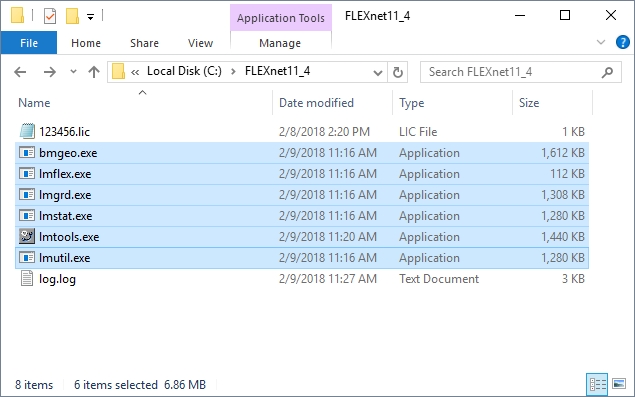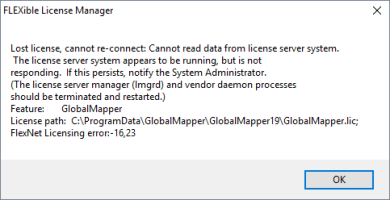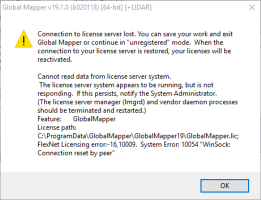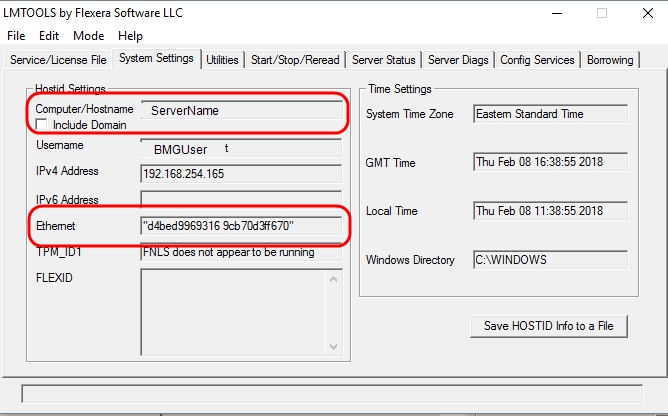Replacing the license server tools requires a temporary stop of the licensing service tools. You will want to inform the end user of interruption in service. If the server is hosting licenses for other applications, they may also experience an interruption in service if they use the same license manager (lmgrd.exe).
-
On the license server machine, open the directory that contains the Global Mapper license file and license tools.
Open LMTOOLS and go to the Server Status tab. Perform a Status Inquiry to see if any users have checked out or borrowed a license file. You can also see this information in the log file available on the Config Services tab.
We recommend instructing all users with a checked out license to return the license. Users with a checked out license may receive one of the following error messages if they do not close the application during the transition.
A user has borrowed a license if there is a linger specified. The linger represents the time until the borrowed license expires (in seconds). Please have all users with borrowed licenses return the licenses to the server. The borrowed license can be returned by opening the application, and navigating to the menu Help > Release/ Remove License option.
On the Start/Stop/Reread tab press the Stop Server button. This stops the licensing service, it does not shut down or stop the machine. It may be necessary to check the Force Server Shutdown option to successfully stop the server. The force server shutdown setting also only impacts the license service and does not shut down the machine.
-
Unzip the new license server tools to an appropriate short path on the server machine, such as C:\lmtools. The license file should be copied from the old directory into the new license server tools directory.
-
Open the new LMTOOLS application. Navigate to the Config Services tab. This tab will recognize the existing service. At this point there are two options:
-
Update the old service: Update the path to the license manager, license file, and debug log to point to the new folder (in this example they point to the new tools in c:\lmtools). Press the Save Service button to save the service.
-
Create a new service: In the service name field, highlight the old service name, and type in a new service name. Click the Path to the lmgrd.exe file box to start creating the new service. The path fields will become empty. Use the browse buttons to point to the new license manager and license file.
Check the 'Use Services' and 'Start Server at Power Up' options. Then press the Save Service button.
For detailed instructions on setting up a new service see Part II - Configuring the Network Service.
-
-
Navigate to the Start/Stop/Reread tab and press the Start Server button.
-
On the Server Status tab press the Perform Status Enquiry button to check that the server is up and running.
If the server is not running properly, see these troubleshooting steps, or contact geohelp@bluemarblegeo.com for further assistance.
Log onto an end user machine and open Global Mapper. If the machine was already connected to the original license service, it will license automatically, and show as registered in the top bar of the application.
For a new end user machine, see Connecting to a Network License Server.
-
Optional: If you do not need the old license tools for any other applications, it is safe to delete them.
Delete the highlighted old license tools once the new server tools are running.

If you created a new service for the new tools, you can also remove the old service on the Config Services tab of LMTOOLS once the new tools are up and running.


